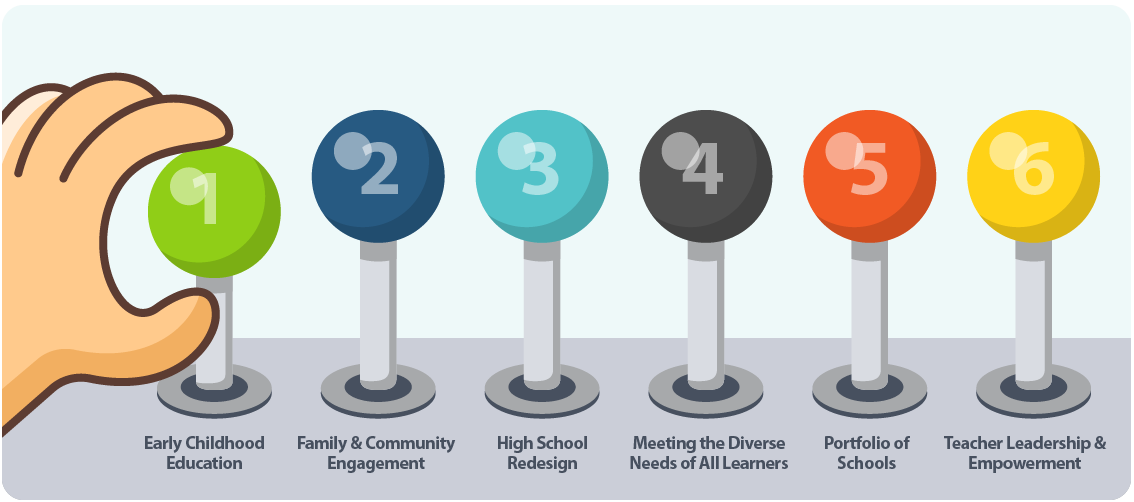Structure and Responsibility
During our early sessions with the Senior Management Team (typically, half or full-day retreats), one of our main objectives was to help the team identify a set of focus areas for the district, each of which would be assigned to a “work team” – a group of 7-15 district leaders, teachers, parents, students, and community members who would meet on a monthly basis to develop recommendations related to that focus area.
To this end, we discussed priorities for the district as a whole and for the strategic planning process in particular. First, we conducted an "initiatives mapping" exercise, in which the team took inventory of all of its current district efforts. To their surprise, they identified 99 different district-wide initiatives!
This is not an uncommonly high number for school districts, as grant-funded projects can quickly accumulate over the years. We then brainstormed the priorities that would be likeliest to move the district in the right direction; an initial list of 20+ topics was winnowed – via a process that including voting and conversation – to about a dozen.
We then determined staff capacity – both on the New Profit side and the district side – and how many teams we could realistically manage. That was a forcing function for integrating and merging some of the ideas. This resulted in a list of six areas of focus, which we called “Levers for Change.”

The number of levers will inevitably vary by the needs and capacities of the school district. Our district’s “Levers for Change” were the following:
- Early Childhood Education
- Family & Community Engagement
- High School Redesign
- Meeting the Diverse Needs of All Learners
- Portfolio of Schools
- Teacher Leadership & Empowerment
In collaboration with district leadership, we assigned a work team to each Lever. Each work team had two co-leads -- one from the district and another from the community. This ensured that internal and external perspectives were always in the room, and that the recommendations within each of the levers were fully owned by the community. The 12 co-leads, along with a few additional community members, district staff, and parents, formed the strategic planning Steering Committee. This Steering Committee was meant to serve as an accountability mechanism for the six work teams, monitoring their progress throughout the planning process and providing feedback on the work teams’ recommendations as they were drafted. The Steering Committee then reported to the superintendent, who, in turn, reported to the School Committee.
Governance structure
In order to ensure that there was sufficient face-to-face collaboration and conversation built into this process, there were 5-7 meetings of each of the six work teams, in addition to 4 meetings of the Steering Committee. Each of these meetings was carefully designed in partnership with the co-leads, and we followed basic guidelines for ensuring that each meeting was smooth and productive. Each meeting included different exercises that were designed to both 1) move the team forward toward its goal of developing recommendations, and 2) build relationships among team members. We received some complaints that there was "too much process", with some team members wishing they could have moved more quickly. We believe, however, that the greater risk would have been not including enough process, as people need time to develop trusting, collaborative working relationships in order to create a set of authentic recommendations.
key takeaways
- Capacity
Create a governance structure that is streamlined to ensure there is sufficient staff capacity to manage it. - Multiple perspectives
Develop a co-leadership structure in which each work team is led by both a district staff member and a community member. This will help ensure that internal and external perspectives are always in the room.


